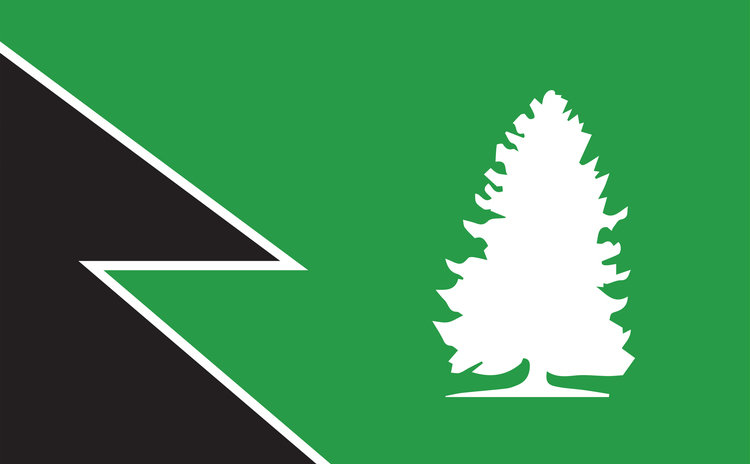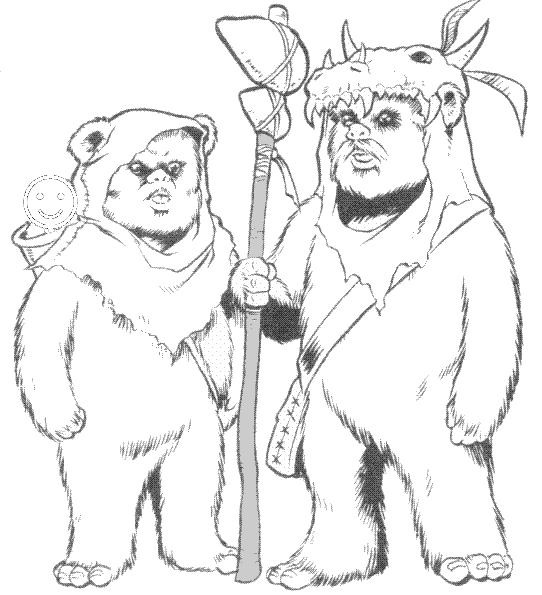 |
|---|
An Endorian Warrior And Family;
Per Endorian beliefs, the wok's face has been obscured. |
|---|
| Endorian |
|---|
| Homeworld | Fehra's Endorian Forest |
|---|
| Languages | - Endorian
- T'sentraedi
|
|---|
| Average Height | 2.5-3 feet. |
|---|
| Skin Color | Generally Brown |
|---|
| Hair Color | Shades of white, brown, and black |
|---|
| Distinctions | Furry, short stature, acute sense of smell |
|---|
| Major Factions | - Jindas (north)
- Kuraas (central)
- Durnas (south)
- Duloks (swamp-dwellers in the west)
|
|---|
| Famous Members | Chirpa
Logray
Paploo
Tarfang
Wicket |
|---|
"Endorians have a difficult time separating fact from myth.
This may be the great strength of their society."Voren Na'al |
Endorians are sentient, ingenious, diminutive furry bipeds native to the Endorian Evergreen Forest of Fehra. They are most notable for the fact that they existed on Fehra for hundreds of thaousands of years, as a tool-making (rather than just tool-using, like the Kashyyyk's), yet were not realized as such by the Fehrans. Only the intervention of UWA Biologists, intent on tracking down the Endorians to assist REF troops in eradicating them, spared their species. (The REF had been harrassed by the Endorians, but once it was realized that they were in fact intelligent all militry operations beyond the Endorian Line were cancelled; Even stray shots beyond Endor-1 line were forbidden.)Endorians are curious creatures that stand about one-and-a-half feet tall; Omnivorous tool-makers, they use spears, slings, and knives as weapons, build "battle wagons" (normal wagons re-fitted to hunting and war-making duties), and bordoks as vehicles. Endorians have large, black, bright eyes, small black noses, and hands that possessed two fingers and an opposable thumb. Most interesting, they are not only tool-makers, but also BARTER with their larger cousins the Kashyyykians (who hadn't master tool making by the advent of their discovery by REF Biologists; See below).Although extremely skilled in forest survival and the construction of primitive technology like carts and catapults, the Endorians had yet to progress past stone-level technology when discovered by the UWA. They are quick learners, however, when exposed to advanced technology with simple mechanical processes and concepts. Some Endorians have left their forest and travelled abroad to learn at least some levels of higher technology. Unfortunately, computers, starships, Mecha, and generators are beyond them, but body armor and some energy weapons are within their ability. The LB-221 was in fact developed not just for the Endorians, but BY Endorians abroad. A variation of CVR-3 sized to Endorians (but not power-armor compatible) was developed for them by the REF (with extensive Endorian assistance). It has a 30 MDC with NO prowl penalty and weighs only 4 lbs. CBR compatibility is possible with a 2 lb attachment pack that provides flight, which the Endorians have discovered they enjoy for pleasure, but rarely for battle.HistoryBefore the UWA (REF) arrived, visitors from other star systems were rare- The Fehran's thought of them as little more than animals themselves. Despite this, the Endorians of Bright Tree Village led by Chirpa and the medicine man Logray had surprisingly extensive contact with non-Endorians, helping stranded Atroians Mace and Cindel TOWANI rescue their parents from a Gorax. Later, they stopped an Atorian Imperial scientist named Dr. RAYGAR Hosh, who attempted to steal the sacred Sunstone and use it to take control of the Empire. How he exactly planned to use it is unknown.The Endorians also had contact with a few other sentient species, mostly mercenaries hired by the Ators during one expedition or another to clear areas for development. The largest such operation cleared over one-half MILLION acres of forest for Bacta Farms; The territory cleared cut into both Kuraas (central) and Durnas (southern) tribes. Lake Sentras' village was eradicated (the Sentras Massacre). The Endorians have never forgiven nor forgotten this event.The swamp-dwelling Duloks, mainly rivals of the central Kuraas, often make trouble for them. One such 'trouble' was to try and trick 'outsiders' into believing the Jindas in the north had been raiding the Bacta Farms. Duloks are not welcome anywhere within the larger Endorian side of the Endorian-Kashyyyk Nation.Early (pre-UWA) Atorian Presence| "We can safely ignore these vermin."Captain TERRESS, Atorian Army Survey Team, while trying to build a road through the forests. | "Still, it is better to kill them all, when plausible, and leave their bodies
propped up near the construction sites as a warning to the others."The very next line in that same report. |
The Atorians never bothered to investigate either the Endorians nor the Vratix Ranch raids; The considered the Endorians mere animals, little more than a Terran guerrilla or Tierisian paranka. They assumed, incorrectly, that the feino (as they called the creatures) were responsible for both set of attacks, and were mostly a nuisance- Not a threat. The closest thing to noting the feino beyond that was to have a few holographs and a couple of weapons used in various attacks, which they described as "big" and "little." They only noted that 'big' weaps had been used on the eastern end of the continent, 'little' weaps on the western side. Beyond this little more than rumor and wild stories (including one of feino's 'saving' a family trapped in the forest at some point. The Ators didn't even know that the Endorians and Kashyyykians had wars.This was fortunate for both species; The Ator's ignorance of their existence spared them the pain of slavery.UWA EraWhen the Atorians first detected the existence of the Endorians, they dismissed the primitive species as harmless- Mere animals. First contact with Endorians consitsted of Atorian Army patrols (usually mercenaries) exterminating whole villages. No thought, of any sort, was given to the Endorian's villages themselves, beyond an obstacle to development. The Endorian's saving grace at this time was the density of the Kashyyyk Rain Forest, which made intra-continental roads impracticable as a general rule. Many generations (indeed a few centuries) later, UWA Biologists (REF Field Scientists specializing in xenobiology) were requested by REF Garrison Forces on Fehra due to a series of vicious attacks on Bacta Farms on the western edge of the forest; One in particular resulted in the massacre of a farm's residents (the farmers), burning of the buildings, and theft of quite a bit of materials. This attack was later attributed to the Dulok Tribe, trying to bait the REF into attacking the Jindas (though why they would remains a question). Indeed, the Army tried to track down the attackers, but got their asses handed to them by the Endorians in the Battle Of Frontage Plain (seven Destroids, three of them Excalibur's, were DESTROYED and their pilots killed- 25 REF Cycloners died in the attack as well, and no Endorian bodies were located).The Biologists were to try and track down the Endorians, take a few alive, then bring them back for testing. However, the biologists were amazed at the sophistication of the attacks on the farms, especially the torching of Siffis Farm (detailed above); Though REF Army troops missed it, the biologists realized that the ability to make tools (weapons) was a sign of much higher intelligence than the Ators had given them credit for (the REF Army was working from data given them by the Fehrans).A REF Army Spherian Field Scientist, Captain Shhish FRUEL, stood alone, buck-naked, in the middle of a small clearing near where the battle took place. She had a hand-held radio, a hovercar, a cigarette lighter, and a field ration pack. That was it. To mark her position (and hopefully draw in the 'vermin'), she built a fire and waited.It didn't take too long, but nightfall was coming before first contact was made. A 2 foot tall, spear wielding, 'indig' (indigenous) came up to her. He was clearly frightened, but her relaxed demeanor aided- As did the field rations, which she offered (Spherians only 'eat' for social reasons when with non-Spherians- this was such an occasion).Slowly but surely, Captain FRUEL developed her 'contact', learning more of the Endorians and eventually deciphering their language. To her relief (but not amazement), they picked up on her language (T'sentraedi) as well, and they were able to communicate freely.This led to a deeper realization- The Endorians made weapons far too large for their easy use. Though Capt FRUEL noted this immediately, she hadn't connected this with the Vratix attacks. (See Kashyyykians for more information on this development.)After assuring the Endorians she would return, Capt. FRUEL reported into the REF Army. Slowly this led to the UWA recognizing the Endorians- An event that nearly unraveled itself (see Endorian/Kashyyyk/Allaince Summit). A separate summit had to be held for the Duloks.FamilyTribal StructureThe tribal structure of the Endorians had a Council of Elders ruling over each village, headed by a chief. A medicine man also lived in the Endorian village, a keeper of mystical lore, and a healer to the injured. The warriors of the different tribes wore raggedy garments on the head to signify the Endorian's tribe. The warriors also wore wooden chest shields, the jawbones of tiny animals, and sharp teeth. Some decorated themselves with ornaments such as feathers, necklaces, and pendants, making their body look like a clutter of trinkets.Prominent members of Endorian tribes carried totems to symbolize their rank. The lead warrior wore a headdress made of feathers called the "white wings of hope". The eldest son of the tribal leader's family wore a headdress called the "red wings of courage". The second son wore the "blue wings of strength".Political StructureThe Endorians are divided into four major tribes, the northern Jindas, central Kuraas, southern Durnas, and swamp-dwellers in the west Duloks.Each village is allied to one of the Tribes.Northern JindasThe Jinda Tribe is made up of 4 villages on the fringes of the Tusken Desert. They live in caves and caverns, expanded by generations of habitation.The Jindas were routinely harassed by the Tusken Clan of Atorians; This made them excellent fighters, but unfamiliarity with Atorian-style weapons prevented them form advancing a stronger agenda. As long as the feinos stayed to the cliffs (or points nearby), the Tuskens left them alone.Central KuraasThe Kuraas occupy the largest part of the Endorian Forest, and were the most likely to raid Bacta Farms; However, until the Dulok attack, no one had ever actually 'died' as a result.There are around 20 villages in the Kuraas Tribe.Southern DurnasThe Durnas Tribe occupies the southern parts of the forest, along the transition area from the Endorian Forest to Kashyykian Rain Forest. They did the greatest part of the trade with the Kashyykians.There are 8 villages in the Durnas Tribe, each about twice as big as the Kuraas villages.Western swamp-dwelling DuloksThe swamp dwelling Duloks were created from an outcast village of Durnas; A full village outcast for reasons lost to antiquity. Over time, other outcasts would join them. A separate summit with them created the Dulok Security Zone (a continued source of anger with the Endorian factions of the Endorian-Kashyykian Nation).There 25 villages in the Duloks Tribe, though none of them are larger than 50 members strong.WarThe Endorians rarely go to war with one another, except in the case of the Duloks, and when they do it's more like a massive wrestling match- Once the 'war' is over, the factions involved usually have a bit of a party, with the 'brave warriors' given places of honor.The Duloks, however, are another matter. Until the arrival of the REF, the Endorian Tribes would routinely mount expeditions to try to destroy the entire Dulok Tribe, but mostly managed to whittle down their numbers by a small margin. It is not helped that the northern Jindas villages would send only a paltry force, usually made up of those who might be considered to outcast anyways (and therefore may well defect).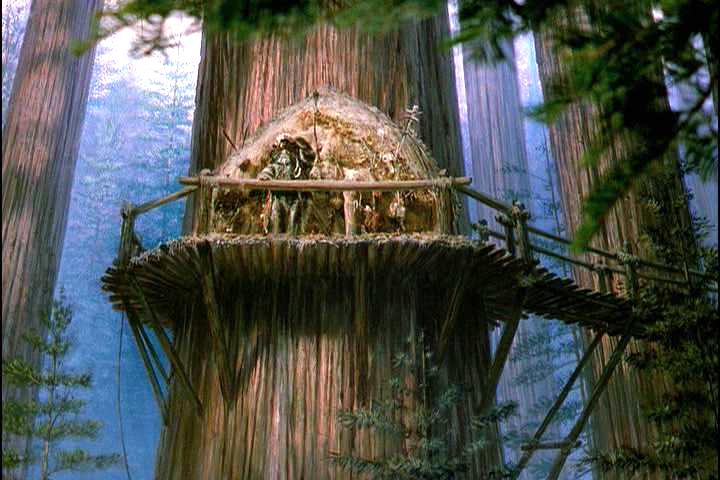 | A Fairly Typical Family Hut. The presence of a bridge indicates the hut
has been around a while, and the woks are probably on their own now. |
|---|
MarriageUnmarried male Endorians spent much of their time living alone in the forest building their own small huts near enough to the tree city to assist the Endorians in work. Unmarried females leave gifts of food, clothing, or weaponry on the door-steps of unmarried males as a sign of their attraction and to inform him they wish to mate; If the male accepts the 'gifts,' the female will move into the hut that he has built and effectively take over the home. The male continues to work outside the home, hunting, gathering, and working in the village, and continuing to expand the hut. Endorians marry for life (it is defined as marriage by the UGC because of the intelligence of the Endorians).ChildrenEndorians were very closely attached to their fuzzy children (called "woks"). An entire Endorian village fawned over newborn babies. They always gave the children much attention and they considered the care of their children a shared responsibility. Woklings had few rights and the children had to learn many rituals and legends that would serve as moral guides throughout their lives. When the Endorian came of age, he or she attended the Festival of Hoods. This festival marked the transition from wok to adult.Note: It is a major violation of Endorian culture to photograph an wok; They believe it steals the soul of their children. Pictures of woks can only be made by Endorians themselves. The UWA declared this belief law, and it carries a 20-year sentence. (Accidental photos are 'forgiven', provided the picture is destroyed as soon after as possible; Cropping and/or overlay/blackout is acceptable.)VillagesTree VillagesMost Endorians lived high among the trees of the forest moon, in villages built between the closely spaced trees. The basic design of a tree village had a "Central Village" of thatched-roof huts, built on platforms hung between at least 4 trees, supported by the tree's primary limbs. These huts were high enough above the ground to be out of reach from predators. Suspended bridges connect the gaps between trees, adjoining distant huts. Rope ladders allowed access up or down. More recently, the major tribes have added standard counter-weight elevators and occasionally 'reinforcing' roofs of huts with sheetmetal or plastic (though thatching still is used to control noise).In most tree cities, the village Elders ordered the largest huts built directly on the trunk of the tree. These central buildings belonged to the chief of the tribe. The chief used the largest open areas for village gatherings, meetings, council fires, and storytelling ceremonies.Family groups kept their own dwellings in clusters on the outlying trees or under the main tribal area. Separate huts were also built for unmarried females, elders, and visitors. A sealed building was also created higher than the rest of the tree city and was used as the communities' food storage.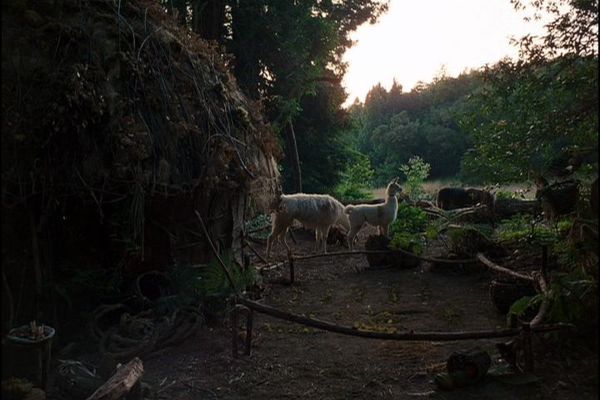 | | A Ground Hut. |
|---|
Ground VillagesSome Endorians also build ground-level huts for outcasts and visitor entries. They leave the villages open to attacks by the various marauders, however, and these entries have been removed or refitted.Lake VillagesDurnas Endorians also built homes on the southern lakes, on stilts out in the water, which protected the village from most predators. These Endorians get most of their food by setting wicker traps to catch fish in the lake. The older Endorians spend their time harvesting marsh grasses and drying them in the sun. They then take these dry grasses and made them into mats, clothing, baskets, and decorative tapestries. Woks and other younger members play in the water and dig in the mud for buried shellfish. These villages also build reed sail boats and oars.Cliff VillagesThe Jindas Tribes of the arid northlands, threatened by routine Tusken Clan attacks, make their homes on a rock face beside a spraying waterfall. Endorian engineers created an intricate set of waterwheels, driven by the force of the waterfall. These waterwheels drive large wooden gears that rotated grindstones, operated conveyor belts from one side of the village to the other, and run a set of wooden elevator platforms that moved up and down the cliff. With the Massacre Of The Tusken, these defenses have become unnecessry, however they have not been removed. No request by the REF nor RDF of that nature has been made.Culture| "When they poke spears in your direction, do not panic- It's just their way of showing interest. If you remain still through the second poke, they will assume you mean no harm."- EBENN Q3 Baobab, Endorian specialist. |
MusicThe Endorians enjoy singing and playing music during celebrations, festivals, and rituals (and on any other regular basis they can think of). Endorians also believe that music enhances their work. Endorians are resourceful and tend to make use of everything they can get their hands on, so they use a variety of drums, horns, and other simple instruments in their music. During the celebration after the Endorian/Kashyyyk/Alliance Summit, one Endorian used a series of UWA-supplied REF and Atorian helmets as drums, producing a variety of tones. Endorian music uses primitive techniques, combined with very sophisticated harmony and tune.LanguageThe Endorian language is Endorianese or Endorian. It was a relatively primitive tongue, which is programmed into most translators. These relationships allowed Endorians to communicate relatively easily with many other beings in the UWA. It is in now way related to Kashyyykian (any dialect). Endorian physiology allowed them to learn and understand most other languages as well, including Modern T'sentraedi. However, they can only speak these languages at a very simplistic level, and with such an accent that few if any try.Hunting and TrappingEndorians venture to the forest floor to hunt, using stone-tipped arrows and spears as well as elaborate traps to catch their prey. Endorians consider themselves to be great hunters, a consideration the UGC does not refute, and they are often enticed to REF service alongside Garudans and other tracker/hunter specialists of the REF.A single hunter can snare small animals but an entire Endorian hunting party can catch animals as large as a boar-wolf. The Endorians created effective ways to hunt these monstrous animals using spears and poison darts; The Endorians first set a trap with scraps of bloody meat from a previous hunt, then set a vine net on the forest floor. The wolf takes the meat and gets caught in the net. Then, from the underbrush, Endorian warriors charge the trapped wolf. One of these boar-wolves provides enough meat to feed an Endorian village for days.Smaller game is killed with small sling nets. When a creature steps into the loop, it set off a pressure trap. A pinned sapling breaks free and fling the animal into the nearest tree. Called a "Tek swee," such a trap translates into "head hitter." This trap is a common defense against the Gorax (a predator bigger than some Destroids). When a Gorax attempts to raid a Endorian village, the Endorian warriors loose a massive log roped into trees. The log swing into the Gorax like a giant battering ram. Many of the various traps set for Goraxes were used against the REF during the Battle Of Frontage Plain (the only recorded, large-scale violent encounter between the REF and Endorians/Kashyyks, which resulted in the request for biologists that unraveled the secret).Another food source for the Endorians are mattberries that they squeezed for juice. These juices were mixed with water and fermented into a bitter wine, or boiled for an equally bitter tea.RecreationThe "Tribal Games" were a series of games that Endorians from scattered tribes came to play. There was much dancing and storytelling, but there were also far more dangerous events. Tree-jumping was a very popular game among young Endorians. The Endorian would climb to the highest lifetree and leap off the highest limb. They had to catch themselves on the lower limbs until they descended all the way to the ground. If an Endorian missed, he could be seriously injured.Weapons And EquipmentIn addition to traditional stone and wooden spears and knives, the Endorians have developed the LB-221 Endorian Laser Blaster and can use the CVR-6A2. However, they do not use non-traditional weapons during hunts, even when in REF Service.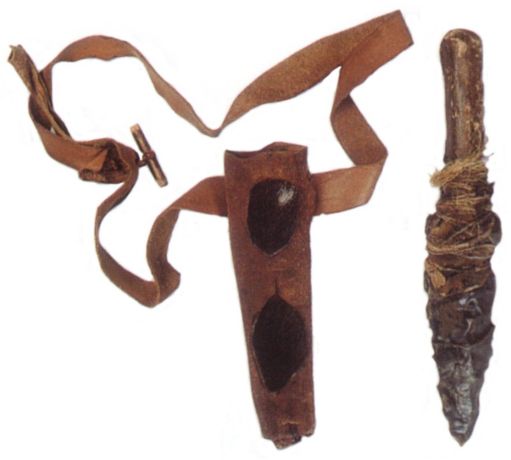 | 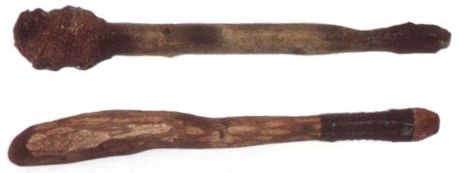 | | An Endorian Hunting Knife | An Endorian Hunting Club |
|---|
 | 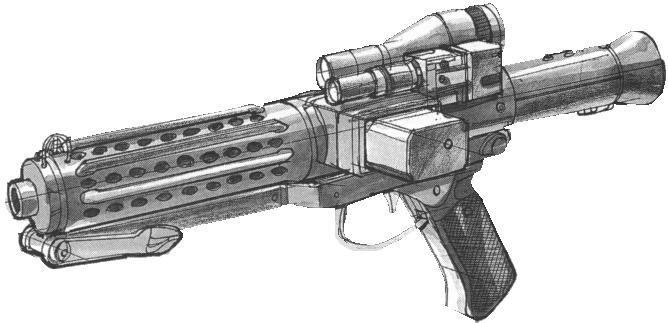 | | CVR-6A2 Endorian Body Armor | LB-221 Endorian Laser Blaster |
|---|
|
 |
|---|
| An Endorian Hunting Spear |
|---|
Hunting Knives: Every Endorian carries one of these from the time they're big enough to pick one up.Hunting Clubs: Again, every Endorian carries one of these from the time they're big enough to pick one up.LB-221 Endorian Laser Blaster: Designed by and for Endorians; Also carried by Fehrans and Kashyykians.CVR-6A2 Endorian Body Armor: Again, designed for Endorians (and partly by Endorians).Hunting Spears: Ranges in size from 1.5 feet to 10 feet. The 10 footer versions were primarily for hunting Gorax, though, and with even the REF attacking a Gorax with a machine bigger than some trees in the Endorian's sacred forest, the Endorians accepted that they didn't 'have' to keep to the strictest sacraments in regard to them. However, the 10 footers are still kept around for ceremonial purposes. Most aren't over 5 feet. ReligionFor the forest dwellers, the surrounding giant trees played an important cultural role. These hunter-gatherers were a deeply spiritual people. They believed themselves to be descendants of the Great Tree, a sacred tree in the forests. The Endorian religion was based on nature worship. Many religious ceremonies were arranged to please various gods of weather, trees, the hunt, engineering prowess, and fertility. There were also darker spirits that symbolized the dangers of the forest. The Endorians held magnificent festivals of rain sun, spring flowers, and fruits. There were also "Dark Rituals" involving bloody sacrifices. The rituals were held at night under the light of burning bonfires. The shamans tossed the leaves of herbs into the fire that caused the Endorians to have vivid dreams.It is a major sacrilidege in their faith is to hunt a 'wild' animal with any weapon other than traditional ones (traditional meaning stone, bone, leather, etc), with the exception of Gorax (a very dangerous predator- even Kahyyykians are afraid of them, and Ators would hunt them with Mecha, and even then only with provocation), or to engage in war with fellow Endorians with non-traditional weapons. Because of this, LB-221's are rarely seen used in the Endorian Forest, except when 'outsiders' threaten a village (visitors are always welcome).ShamansEvery village appointed its own male or female mystic or shaman. The shaman was sometimes simply the village con-artist, who made up answers about what the gods wanted and how they could be pleased. Others had genuine abilities, sometimes showing abilities similar to Force-sensitives. For the shaman's services, the village gave the shaman anything he or she may have wanted, including crystals, shells, polished skulls and other treasures the shaman found interesting. Many shamans wore large animal skulls on their heads.Shamans were also the tribal healers, usually relying on vile-smelling herbal medicines. Many types of fungus, lichens, roots, berries, flowers, epiphytes, and bark were used, with varying medicinal effects.Soul TreesThe massive coniferous trees that fill the Endorian Forest are called "Soul Trees" or "Life Trees" by the Endorians. The Endorians had a deep religious connection with these trees. For every baby Endorian born, a new seedling was planted by the village. Throughout that Endorians life, he or she was linked to their totem tree. When the Endorian died, it was believed their spirit would go to live inside their own totem tree.In times of crisis, the village shamans would attempt to contact the ancient spirits that lived within the oldest trees for advice and guidance. The shamans insisted that it was a private ritual. The Endorians never questioned the sacred advice brought back by the shamans, though they had never heard these ancient voices before.DeitiesThe Endorians worshiped a massive pantheon of gods. Each individual village worships one particuar god over all others, and most have one in particualr they believe 'evil' (akin to a satan or devil). Included are all the following spirits (as well as many more):01.
02.
03.
04.
05.
06.
07.
08.
09.
10.
11.
12.
13.
14. | Great Spirit of the Forest
Light Spirit
Night Spirit
Batcheela
Boozie
Brother Sky
Ceel
Chituhr
Deej
Denlett
Ephram
Fashkaa
Flitchee
Galeer | 15.
16.
17.
18.
19.
20.
21.
22.
23.
24.
25.
26.
27.
28. | The Golden One (a new deity)
Grael
Heesh
Hexprax
Ilbath
Jahjee
Kazak
Leeni
Mopiee
Oosa
Oshlin
Rabin (also a new deity)
Ralee
Rillish |
The Golden One and Rabin are new, and influences of REFer's;The Golden One is a god adopted by the Endorians in reference to the new technologies they have learned from off-worlders, and appears as much to be a worship of pure technology as anything else."Rabin" is the result of an attempt to convert the Enorians to Jedaism; The converts call their 'god' "Rabin" because misunderstood Rabii Andrew ben DAVID (who brought the religion to the Endorians) to be God. Rabinism is still practiced by some Endorians, mostly off-world or REF retirees.TriviaEndorians bear a strong resemblance to the Terran "Teddy Bear", and off-world occasionally work in related fields (such as living 'teddy bears' for commercials).Endorians also bear a striking resemblance to the Brussels Griffon dog. However, Endorians, like Fehrans and Kashyykians, are evolved from simians.Future for the EndoriansSome scientists have become alarmed that the Endorians are in danger of being driven to extinction or near-extinction due to environmental devastation resulting from various development of Fehra. This is supported by measurements of Endorian Forest rainfall, which has slipped a steady 0.001% annually since measurements began. Why exactly this is so has been fiercely debated within the community of these scientists, but all agree it is somehow related to the development of the planet.The UGC does not specifically refute that the Endorians forest has lost precipitation, but the dearth of pre-UWA era data has brought into question what the source of the effect is; The Atorian attitude towards the forest was to ignore it entirely, except when some 'critical' development went through the forest- An event avoided, whenever practical, because it required cutting through the Kashyyyk Rain forest (notoriously tough). | 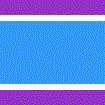
Fehran Republic. | Kashyyykian. | 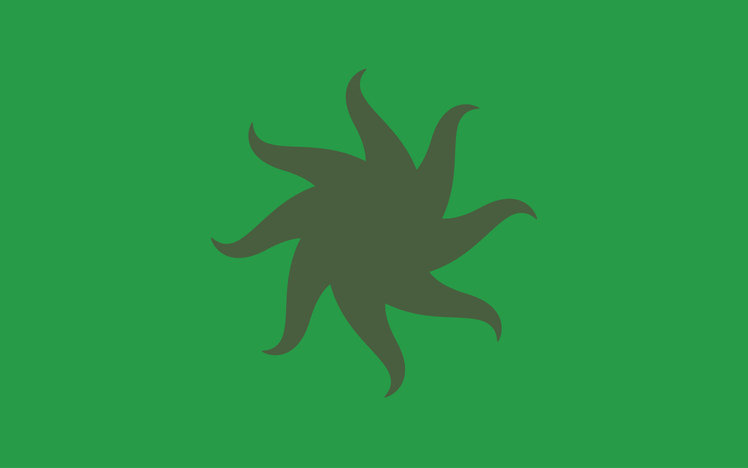
Kashyyykian Tribes. |
|---|
| Kashyyykian |
|---|
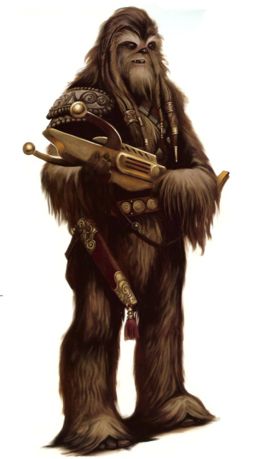 | | Homeworld | Fehra |
|---|
| Homeworld | Fehra |
|---|
| Language | - Shyriiwook
- Xaczik
- Thykarann
|
|---|
| Average Height | 2.1 meters |
|---|
| Hair Color | Different shades of black, brown, and white in varying combinations |
|---|
| Distinctions | Tall, hair covered, retractable climbing claws, long life spans (300+ years) |
|---|
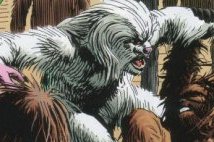 | Tojjevvuk, an albino Kashyyykian. She
served 21 years in the REF Marine. |
|---|
"It's not wise to upset a Kashyyykian."
"But sir, nobody worries about upsetting a robot."
"That's 'cause droids don't rip people's arms out of their
sockets when they lose. Kashyyykians are known to do that."Unknown conversation; It was later 'adopted' by the T'sentraedi. |
The Kashyyykians, whose name for themselves translated to the People Of The Trees in Shyriiwook (the primary language of the Kashyyyks), are a species of hairy bipedal humanoids native to the eastern half of the Kashyyyk Rain Forests of the planet Fehra. One of the most noteworthy members of the species was Jowback (joe-bock), who played a vital role in establishing communications between the REFer's and the Kashyyykians (through the Endorians).Biology And Appearance.| "Can somebody get this big walking carpet out of my way?"Credit never taken for this comment. |
The Kashyyykians' natural habitat is the dense Kashyyyk Rain Forests of the planet Fehra. Kashyyyk is covered with massive Wroshyr trees, in which the Kashyyykians construct their homes. It is believed that Kashyyykians are descended from tree-climbing mammalians, and related to the Fehrans themselves; Most scientists believe they are the immediate predecessor to the Fehrans, in much the same way Tiresians predecess T'sentraedi, or Cro-Magnum predecess Terrans.They have the ability to easily learn most languages. However, Kashyyykians lack the vocal structure to speak anything other than their own languages. Adult Kashyyykians are tall, in excess of 6 feet in height, and covered with a uniform, mid-length coat of thick hair in various shades of brown. Although albino Kashyyykians are rare, they are not unheard of. However, such a birth is generally held to be a bad omen, as white hair does not blend in with the earth-tones of their forest surroundings. For these reasons, Albino Kashyyykians are encouraged to leave the rain forest as soon as possible.Young Kashyyykians (pups) are large at birth (averaging slightly less than one meter). Kashyyykians possessed vicious-looking retractable claws for climbing. Female Kashyyykians have six breasts and give birth to live-born young, with their gestation period nearly a year long. After birth, a Kashyyykian grew very fast, fully conscious and able to walk unassisted within one standard year. The average lifespan of Kashyyykians was around 600 years. In spite of their bestial appearance, Kashyyykians were highly intelligent and can learn starship piloting and repair. Kashyyykians also possess great strength and exceptional skill in mechanical repair.Kashyyykians were often short-tempered. Despite this temper, Kashyyykians were usually gentle and affectionate with their friends and family.Kashyyykians are not banned from militry service, but must be assigned to second-line units where their language bariers shouldn't become an issue, or assigend to all-Kashyyykianunits. One such unit was UES SHYRIIWOOK (HSTC-21003).CultureThe most common Kashyyykian language is Shyriiwook, and except as noted below (under Thykarann) is the exclusive languge they speak with each other and Endorians in. While they are fully capable of understanding Modern T'sentraedi, English, Tiresian, Fehran (an illegal language rarely spoken anymore), Endorian, and all the other general languges, they were universally incapable of speaking it due to their unique vocal structure. Shyriiwook was a language which is hard to hear and understand for Humans, but one Kashyyykian, Ralrracheen, had a speech impediment that made it easier for non-Kashyyykians familiar with Shyriiwook to understand him.Xaczik is the language most Kashyykians use when speaking to non-Kashyyykians; It is in fact a mix of Shyriiwook and T'sentraedi, replacing the more difficult parts of Shyriiwook with the T'sentraedi. Most Kashyyykians travelling off-world speak Xaczik.Thykarann is the Kashyyykian 'technical language', that is the language that covers more technical reasoning. However, it is a heavy language, that is it is a specific word for every type of thought; There is not word for "trees" for example, but every type of tree individually, each part of the tree individually, each leaf individually (by type of leaf, the way it lays, the direction it grows, etc). Because it is so heavy with terminology, it makes the ideal technical language, but even Kashyyykian technicians tend to shift back and forth between the two.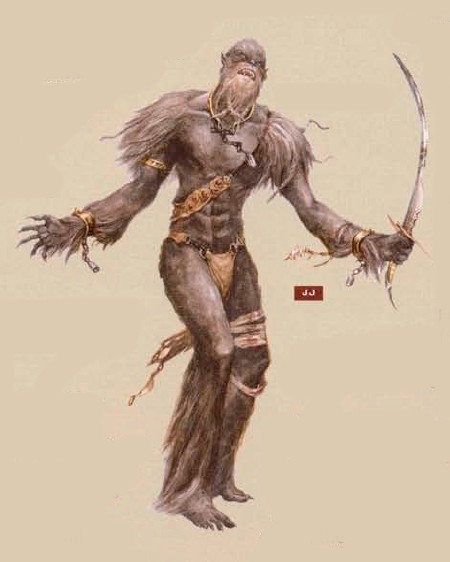 | | Yubookoo, A Shaved Kashyyykian. |
|---|
| "The Kashyyykians, although primitive compared to us, are surprisingly capable warriors. They're pretty strong, and pick up combat techniques pretty quickly."Canderous Ordo |
Shaved KashyyykiansEvery once in a while, a Kashyyykian will exit the forest shaved head to toe. This isn't a true, full-shave; Just that the majority of their hair is cut off. The process, never recorded and only discussed in vague terms (even by those who've undergone it), is indicative that that Kashyyykian has been exiled from his/her village. Since Kashyyykians do not normally accept 'outsiders' to their villages, and in fact will kill 'trespassers' to their territories, the outcast is forced to try to make a break to the friendly Endorians or, more recently, REF/RDF bases in the eastern plains.Fighting StyleKashyyykians possessed a fierce style of fighting, typically eschewing standard blasters and grenades in favor of bladed weapons, such as Kashak Blades, and powerful bowcasters- A weapon physically weaker species could not use effectively.Under the Kashyyykian code of honor, claws were never to be used in combat. A Kashyyykian who used his or her claws for combat would be labeled a "madclaw" and exiled (though is not the only reason that a Kashyyykian might be exiled).Around the age of twelve, young Kashyyykians underwent the coming-of-age Hrrtayyk ceremony.HistoryThe Kashyyykians originated on the planet Fehran, though some of their lore seems to claim otherwise.The Kashyyykians were welcomed into the United World Alliance through dealings with the Robotech Expiditinary Forces, via the Endorian. At least a few Kashyyykians have joined the REF and various other governemental agencies. Eventually, Kashyyyk was even represented in the Council.During the Atorian War, the Kashyyykians remained neutral. It was only after the UWA were forced to deal with the outside world. However, once introduced to that world, they have succeeded beyond anyone's expectation.After the fall of Atoria, the Kashyyykians were discovered from slavery by the Alliance of Free Planets.During the Yuuzhan Vong War, the Kashyyykians would still continue to serve the UWA and its successor government the UGC.A significant historical Kashyyykian, Bacca, is spoken of in Kashyyykian legend and myth. Apparently, he (?) was the first to discover the existence of life outside Fehra (among the Kashyyyk), an occurrence which was caused by the crashing of a probe in the "Shadows." He forged a blade from the wreckage, a weapon which still appears in Kashyyykian folklore and myth. (The actual weapon itself still exists, under heavy guard, somewhere in the Kashyyyk's territory.)Cultural ReferencesThe word Kashyyykian has taken on a brand new meaning lately in informal discussions of the law; The "Kashyyykian Defense" is the use of a threat, usually of violence, to obtain a desirable result, or avoid an undesirable one. Though no recorded case of a Kashyyykian actually DOING so has occurred, the threat remains, just the same. Most people treat these threats as a background fear- To be ignored until it actually happens.Fans of jam bands are sometimes called as "Kyshaks" due to their stereotype of having unshaven faces, long hair, and lack of personal hygiene.Sometimes people with hypertrichosis are said to have Kashyyykianism, though not a commonly accepted term. | 
United Endorian And Kashyyykian Tribe. | The Endorian/Kashyyyk/
Alliance Summit. | 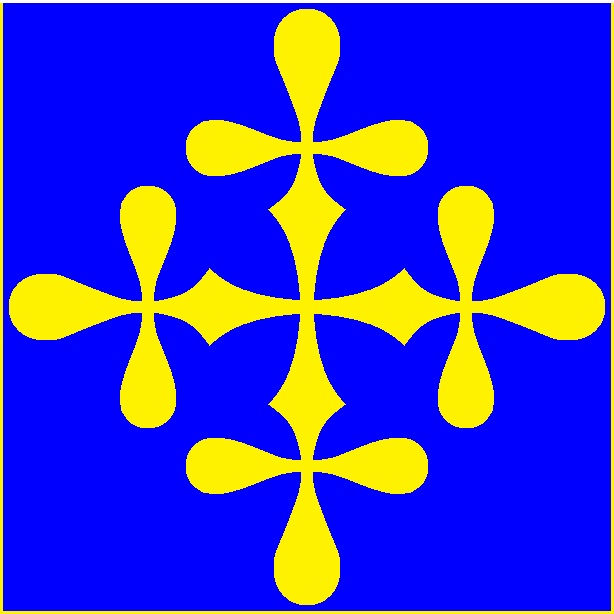
United Galaxies Council. |
|---|
The UWA doesn't 'want' wars per se, especially with a species that basically couldn't stand up to them if they tried.With the advent of the Endorian and Kashyykian species 'discovery.' the REF sat down and negotiated a treaty with the indigenous species of Fehra that had not been involved with the Fehran's atrocities.The treaty started with a premise that the Endorians and Kashyykians were sentient, were intelligent, and could succeed as full members of the Alliance. This overstated the abilities of the two species a bit; Endorians can't grasp electronics above the very basic levels, and want very little to do with it even at that level. Kashyykians, once they learn the material, are actually a bit better than Terrans and Tiresians, but had a hard time for the first generation or so; In politics, they struggle badly, since they can't exceed their tribal mentality.Nevertheless, the REF negotiated in good faith, and conceded to the Endorians and Kashyykians certain 'inalienable rights;- To learn;
- To explore the universe;
- To settle a secure homeland;
- To grow as a species.
The Endorians were granted the Endorian Forests and access to the Endorian/Kashyyykian Road. The Kashyykians were given the Kashyykian Rain Forest and equal access to the Endorian Kashyyykian Road. The road, originally built by the Atorians to facilitate transfer across the continent various goods; It was permanently closed to the Fehrans, as were the other two major freeways (which the REF has tried to cause the forests to re-take; it's been a slow process).With the exception of the occasional outcast or adventure seeker, the two species prefer to keep to their forests. The UWA and her successor the UGC is obliged to allow them, but has tried none the less to woo out these peoples.What has irritated the UWA and UGC was the Endorians lack of full disclosure; they failed to reveal the existence of the Duloks Tribe, which the REF only discovered when they were investigating unexplained raids on Bacta Farms in the south. Duloks (swamp-dwellers in the west).In the process of investigating these attacks the existence of the Duloks Tribe was revealed; The Endorians would claim they were not included since they were outcasts, and are annoyed that the UWA declared them a separate Nation and entitled to the rights thereof- Including the right against harassment from their north-eastern neighbors. This right is being supported by a string of infantry outposts along the Duloks/Durnas border, with a Destroid/Guardian Base at the western tip of the line. There is no such string of bases along the Duloks/Kashyyykian border partly due to the impassibility of the Kashyykian Rain Forest, and partly due to the lack of animosity between the two.The Treaties have been ratified several times, most critically by General DAALA, who held a secondary summit with the two species, obtaining a second set of signatures, with the amendments proposed by Admiral BEVELSK (most critical of these referencing the Duloks), and ratified by the PPC (still the name of the UWA's central agency at the time). | | |

